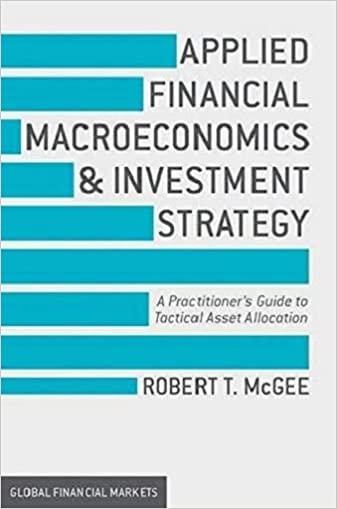Question
You are planning your finance for the next twenty year. Assume that you will earn a constant interest rate on your money. At the beginning
You are planning your finance for the next twenty year. Assume that you will earn a constant interest rate on your money. At the beginning of the first year, you have $15,000 in your bank account. Your salary is $45000 in the first year and it is expected to grow at 3% per annum. Your expenses is $25000 and it is expected to grow at 5% each year. You will deposit the remaining amount to a fixed deposit account at the end of each year and it will earn an interest of 7% per year.
Develop a spreadsheet model that will show you how much you will have accumulated at the end of 20 years. Use your worksheet to compute the amount of money and interest earned at the end of 20 years for the inputs given here and tabulate your results. What is the average deposit and bank balance? You should have a separate column for income, expenses, annual deposit and interest earn for each year. You should also show the finance using appropriate graph. (16 marks)
Identify what will be the interest rate the bank should pay, so that you have exactly $1,000,000 in 20 years? How much is the total interest earned? Explain how you derive the answer. (5 marks)
You reckon that you may need to withdraw $25,000 from the bank at the start of the tenth year for your kids education for four years (year 10th 13th) and the tuition fees is expected to increase by 10% each years. For an interest rate of 7% per year as given in part a), analyse what would be your bank balance at the end of 20 years and total withdrawal amount. You may add a new column for Withdrawal to take care of the withdrawal amount. (5 marks)
-
State two ways how you can grow your bank balance at the end of 20 years. (6 marks)
This is the answer I received to my above question. I would like to clarify for part(a), why do I have an ending balance if the remaining amount is placed into fixed deposit to earn interest? That means I would not have an opening balance for years 2-20 right? And why is the deposit $0 for all years in the graph?
For part(b), is there another way to solve it without using the guessing method? Perhaps a formula that I could use?
Part(c) answer is affected by both part(a) answer.
Part(d) is not answered.
(Note: Please provide the solution using excel, with an explaination so that I could understand better). Thank you

Step by Step Solution
There are 3 Steps involved in it
Step: 1

Get Instant Access to Expert-Tailored Solutions
See step-by-step solutions with expert insights and AI powered tools for academic success
Step: 2

Step: 3

Ace Your Homework with AI
Get the answers you need in no time with our AI-driven, step-by-step assistance
Get Started


